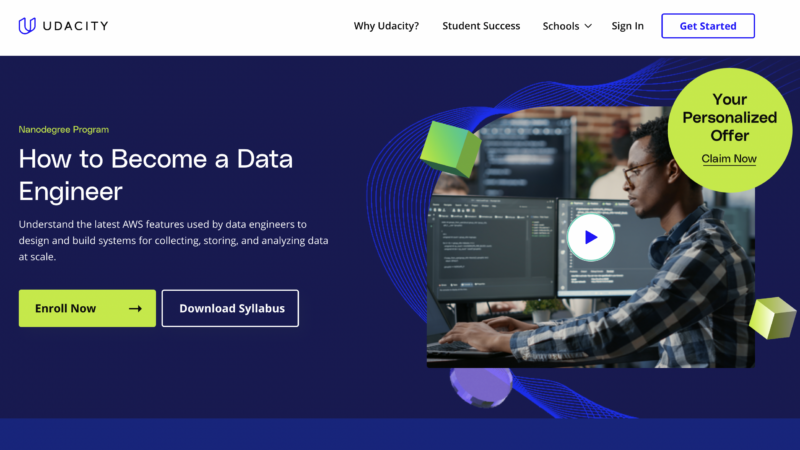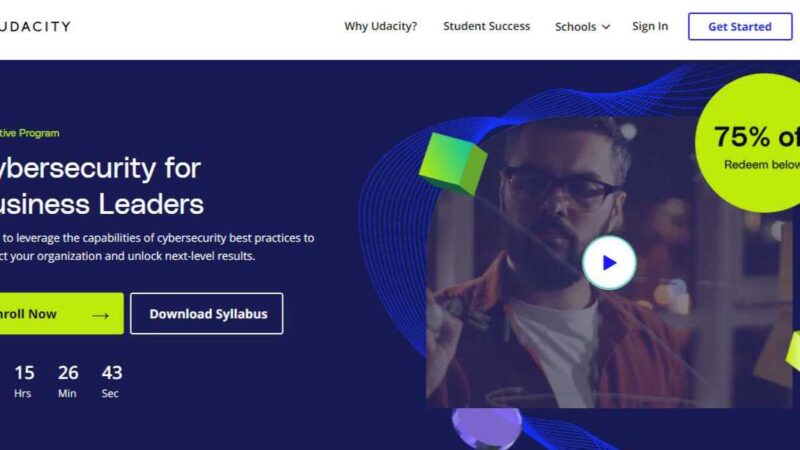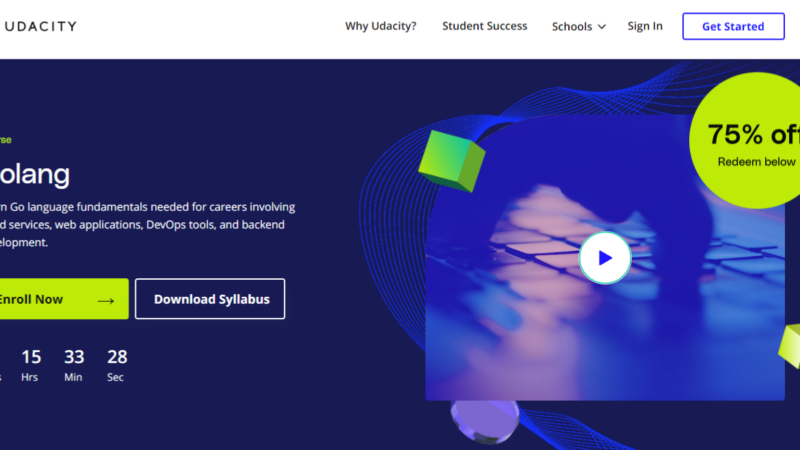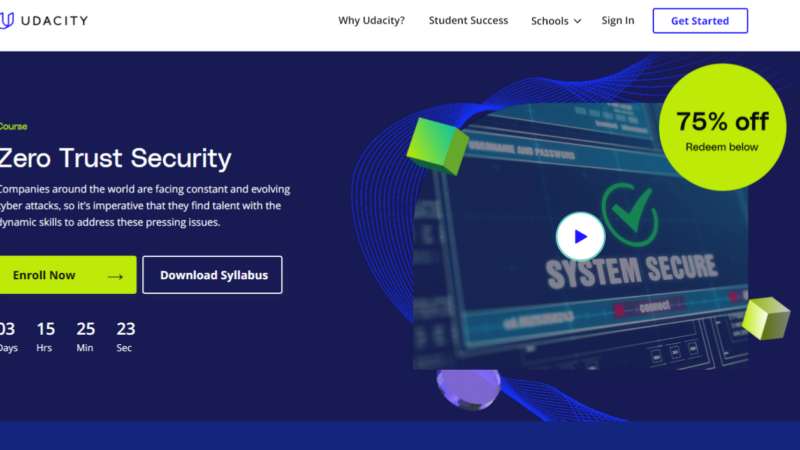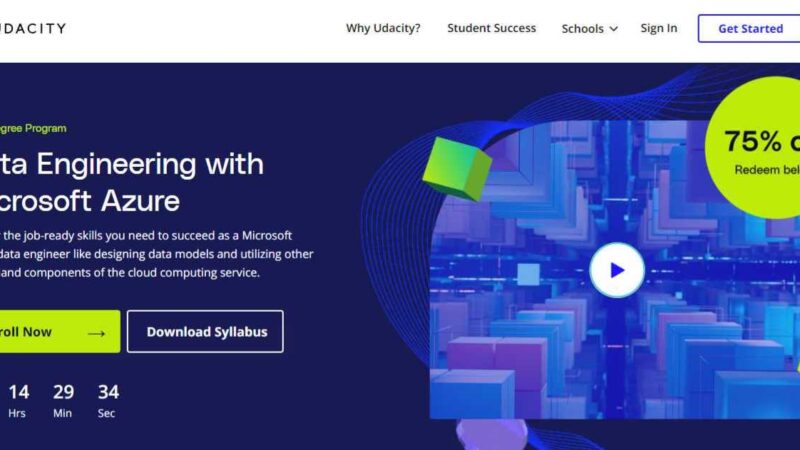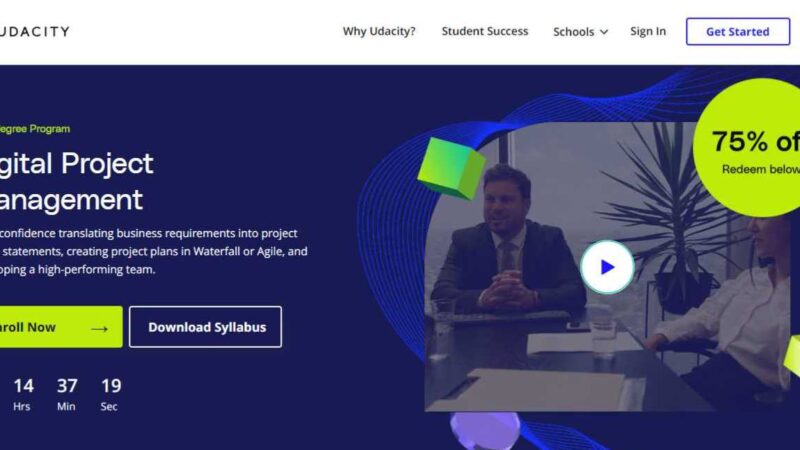Udacity Sensor Fusion Engineer Nanodegree Review

Engineering has made its way into every field as technology has come pouring into just about every direction. With advancements to motorized systems, sensory detection has increased in demand. The knowledge it takes to create code that will detect objects and lead self-driving vehicles on their way safely has the power to break into the field, coming in just before the peak and starting to evolving your skills in unison with techniques.
Building this base of useful knowledge requires learning, which you can start with an online academy like Udacity. They have a Sensor Fusion Engineer Nanodegree that was developed in collaboration with Mercedes Benz. This nanodegree is said to come with all the necessary knowledge to jumpstart a career in the field, even intertwined with real industry projects that are said to prepare learners before ever stepping foot into their first interview. To see if it is right for you, we’ve done a little digging to present you with an in-depth look at both the academy and the course, helping you to decide whether or not this is the course for you. We’ve also included a look into the job market, to see if this type of career will serve you from entry-level and beyond.
What is Udacity?
Udacity is an online academy that specializes in producing courses that provide specific technical knowledge over a wide range of topics. They’ve been around since 2012, developing courses with big names in the business to bring learners the skills they need to break into the field. They’ve produced a large number of graduates from all across the globe, some of which have gone on to work with industry leaders. They specialize in nanodegrees, of which the academy is constantly updating and tweaking to keep them current as technology and techniques advance.
What is a Nanodegree?
If you’re not familiar with a nanodegree, they’re usually certifications that focus on a specific area in the world of technological knowledge. They are meant to take shorter amounts of time than a normal degree, taking way less than a year to complete. These are a Udacity specialty plus, they offer a ton of different courses covering all the latest and cutting-edge subjects in the world of technology. Apart from a certification, each nanodegree comes with:
- A Mentor
- A Community of Students
- Flexible Learning
- Real Industry Projects
- Career Services
Meet the Instructors
When you’re receiving knowledge about a complex topic, its good to know you will have instructors that know what they’re talking about. Not only that they know how to give a lecture but, they can add a bit of their own advice in from their own experience. For this course, you’ve got a first-class collection of instructors, which we will introduce to you here:
David Silver
David is the head of curriculum for this course, and rightly so. After his studies in computer science, he went on to work with Ford as a research engineer with the autonomous vehicle team.
Stephen Welch
He is a PhD holder of mathematics and has since then made his way into the world of education. He’s taught in several courses both face to face and with Udacity.
Andreas Haja
His PhD in computer science led him directly toward his interests in autonomous vehicles. Throughout his career, he’s worked with Volkswagen and Bosch, helping them in their development of camera technology and prototyping.
Abdullah Zaidi
The early years of his career were spent with Qualcomm where he developed a keen interest in radio frequency design and digital signals. Currently, he’s part of the team at Metawave, where he leads a team of radar developers.
Aaron Brown
Using his formations and knowledge of robotics and deep learning, Aaron helps to develop contents at Udacity that have a sharp focus on the development of projects for self-driving cars.
Before you Begin
This course teaches a set of both intermediate and advanced concepts. Throughout the duration of the course, you’ll be using C++ along with a mixture of linear algebra, calculus and statistics. While you’ll be taught a bit of the surface knowledge required to power you though the course, you’ll need a bit of experience before you begin.
If you feel like you fall short of a few of these concepts, the academy recommends that you checkout the course designed to come before this one, the Intro to Self-Driving Cars nanodegree. You can also take the opportunity to brush up on many introductory concepts with the Udacity free courses which you can find here: https://blog.udacity.com/category/free-courses
Course Breakdown
The course is made to hit on four main topics, each one coming with mini projects throughout that will test your knowledge. You’ll notice that there is a sharp pinpoint focus on sensory technology, leaving you with a more in-depth base. The course is broken down in the following way:
Lidar
You’ll dive head first into the world of Lidar where you will use its raw form to process with help from filtering, segmentation and clustering. These are the exact methods deployed when engineers are creating detection systems for objects and other vehicles on the road. You’ll end this section with an introduction to Carla, Udacity’s self-driving car. You’ll apply the knowledge learned to get Carla moving successfully while helping her to avoid obstacles in the road.
Radar
In this section, you’ll see how to both detect and track objects. You’ll be using the velocity and orientation to help create systems that paint a clear picture canceling out distractions like noises and occlusions. At the end of this section, you’ll work with calibration to teach radar data how to detect obstacles in real time.
Cameras
See how images can be made to come together using data from a point cloud. You’ll be able to take the collected data and use it to identify objects into 3 dimensions. You’ll use this knowledge to help link projections together while using data collections that allow for tracking over time.
Kalman Filters
In this section you’ll be working with piles of data from different sources with the help of Kalman Filters. You will actually build unscented filters that will help with the tracking of nonlinear movements. At the end, you’ll put all your knowledge together to use C++ to create a filter that will track a bicycle as it makes its way from start to finish.
How Long Does It Take?
Part of Udacity’s perks is that you can take as long as you’d like. The flexible learning gives you access to login at any time day or night any day of the week. Though you will have due dates on a few of your projects, you’ll be given plenty of notice beforehand to adjust your schedule.
For a bit of a better idea about how long this course will take to complete, Udacity has provided an estimate. They say that, when dedicating 10 hours a week, the course is likely to take 4 months. Of course, if you can dedicate more or less time or if you absorb things quickly, time could fly, and you could be holding your certificate faster than you might think.
While taking all the time in the world may sound great, there are two reasons why you don’t want to procrastinate. One has to do with the knowledge you’re exposed to, of which you will need to keep sharp to ensure your success with future topics. Secondly, the cost is affected by the total time it takes, so the longer the more expensive, more on that below.
How Much Does It Cost?
If you’re looking to take the course now or in the very near future, you’re in luck. There are currently deals up and running that come with a free month of access no matter which of the two methods you choose. Which is better for you depends on a few things, including your budget and the time you think it will take you to complete the course.
Pay Per Month
The first option is a pay as you go. With the current deal up and running, you get your first month for free and can start learning today without any cost to you. After that, the price is $359 per month. This option is put in place to suit those who are on a budget, but, the total cost can add up if you take too long.
Udacity’s Deal
If you choose to take the Udacity deal, they base the entire price off of estimated time of completion. That being said, with the deal included, you’ll pay for three months of access but get four months total to finish the program. With this deal, the price is dropped 15% but, you do have to pay up front.
To find the deal that is right for you, you should think about how much time you have per week to dedicate to the program and, make sure that you can commit to some kind of schedule. If you can, then you could snag the course at a steal but, make sure you’re able to stick to it or it could cost you in the long run.
What have Learners Said?
Udacity’s big name around the web brings them recognition from all around. This means that there is a lot of buzz floating around, some good and some bad. While you can’t please them all, the course seems to have an overall positive reputation from many of the current learners and graduates from this course. Here is what a few of the learners had to say:
“In this program we are fortunate to work especially closely with autonomous vehicle engineers from Mercedes-Benz. They appear throughout the Nanodegree Program, often as the primary instructors, and sometimes simply offering their expertise and context on any other topic.” – David S.
“Udacity is so much more than just classrooms––they provide access to industry hiring teams, mentors, and vibrant online communities. These were all tremendously helpful in jumpstarting my entire career and getting me to where I am today. Many employers contacted me because of these Nanodegree programs and I met a lot of friends and colleagues.” – Grace L.
A Glimpse at the Job Market
Sensor fusion engineering comes in high demand these days. There are all kinds of developments in the market both current and set for the future that promise some huge, ground-breaking additions to the constantly evolving world of sensory detection and recognition. Interesting Engineering rates the job market for those with knowledge of sensory systems to be one of the top branches of engineering. The salaries can go up into six figures and beyond depending on the specified and complex range of knowledge one possesses.
Lockheed and Martin rate sensor engineering as one of the branches in the field that is helping to push technology to unforeseen places, opening up doors in the automotive, drone, and other motion sensory fields all across the board. For this reason and so many more, breaking into the field with more specified knowledge can open up several doors at the entry level. Once you’re in, the more you learn, the more interesting the jobs you’ll qualify for, growing and expanding right alongside the technology.
The Wrap Up
This course is meant to provide graduates with a well-rounded and in-depth knowledge base to break into the sensor fusion engineering field. While there will still be much to learn, this course is enough to land a job, which comes easier thanks to help from career services provided with each nanodegree.
If you’ve been thinking about a career in an ever changing and exciting field, sensor engineering could be the one for you. While you’ll need to look somewhere to begin to grow your knowledge, Udacity could be just the thing you’re looking for. You should have more than enough to decide after our in-depth look, leaving only you to make the final decision. You can start making your way into the field today, and now at a lower price than ever with Udacity.
